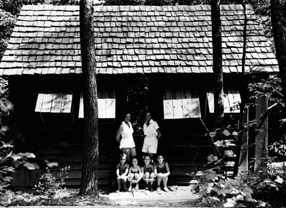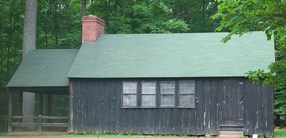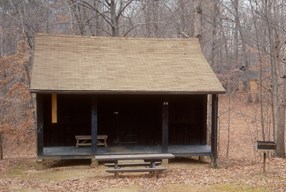
National Archives and Records Administration In the fall of 2012, Prince William Forest Park implemented its plans to replace the roofing system on its historic 1930s era cabins. Park staff work around the clock to maintain these historic structures to historic standards, replacing board for board and nail for nail. In planning for the long term stability of the structures, park managers must work to balance the historic standards requirements with ever-present funding constraints and park goals for environmental stewardship. It is the goal of the park to eventually replace all of the cabin roofs in alignment with this plan. 
The Historic Cabins
About the Cabin Roofs

During the OSS era (1942-1945), some of the original cabin roofs were replaced with asphalt shingles which was cheaper and less labor intensive, despite being aesthetically opposed to the rustic architecture movement. Since the 1940s, layer after layer of asphalt shingles have been laid upon the roofs with more regard to structural preservation that architectural aesthetics. Over the years, the roof color has varied from the original, faded gray for a cedar shake, to brown, green, and gray asphault shingles. 
Considering Our Options

About the Roofing Proposal
|
Last updated: September 29, 2017
